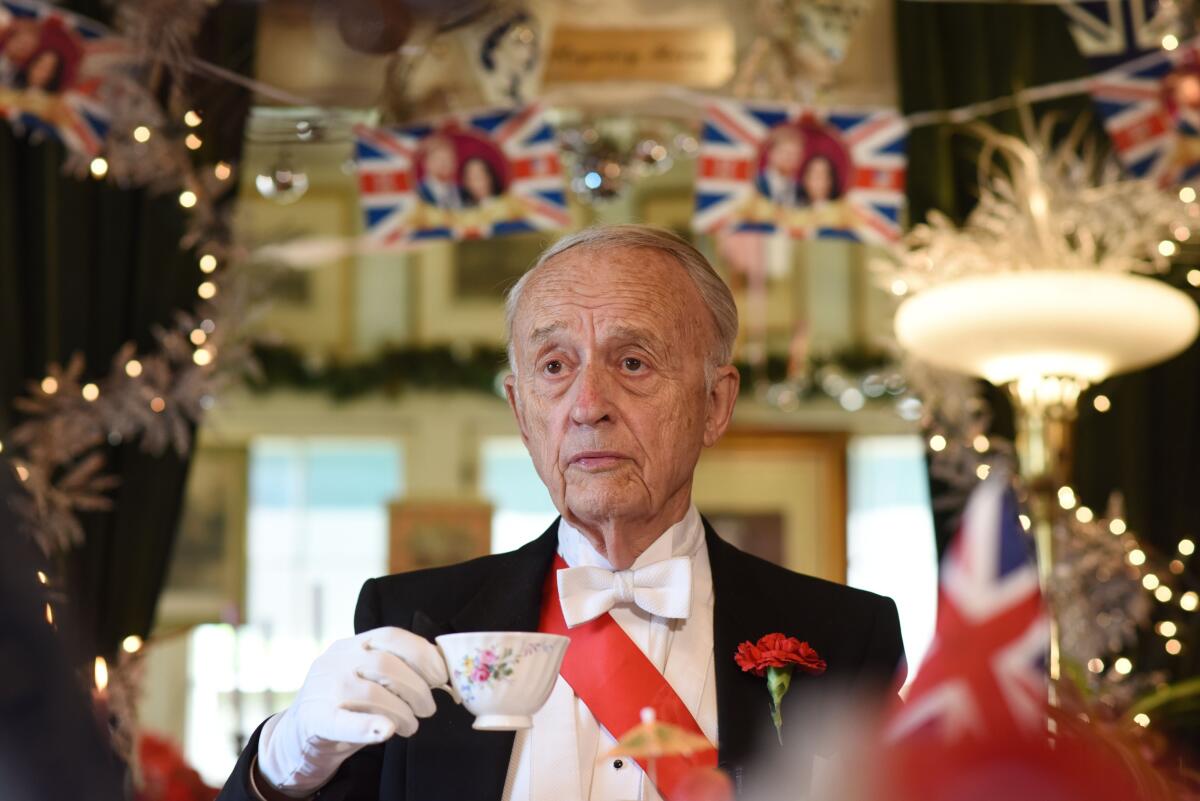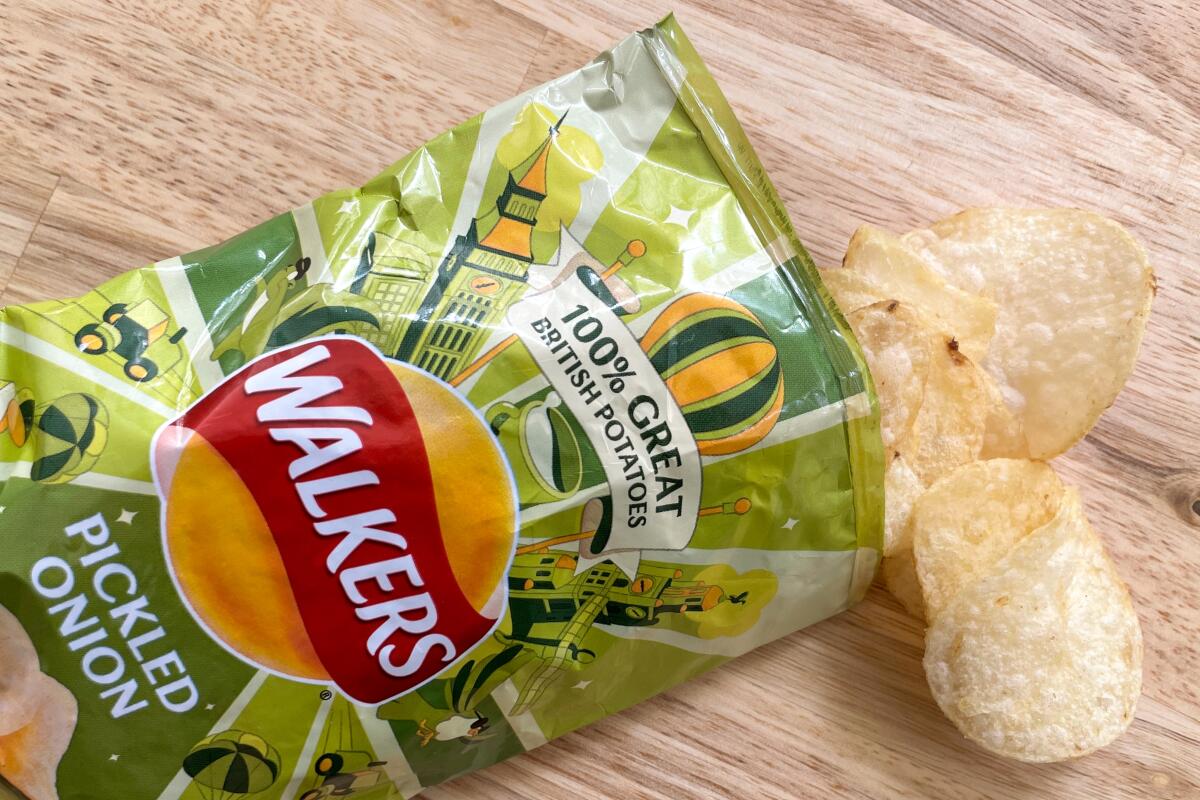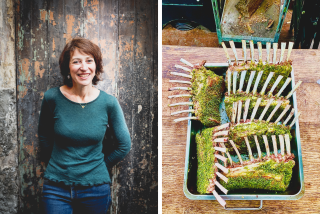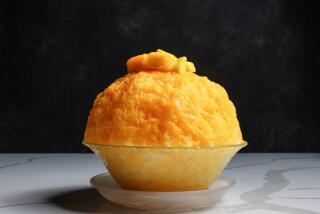Remembering Queen Elizabeth II with scones, her way

- Share via
It’s said that Queen Elizabeth II wasn’t much of a gourmand. She ate to live versus lived to eat. But I thought a few warm scones, some clotted cream and fruit would be a fitting way to honor the passing of Britain’s longest-serving monarch.
There are no fewer than two signs in front of the Rose Tree Cottage in Pasadena letting you know that the scones are freshly baked. Shortly after the news of the queen’s death, I drove to the cottage, rang the doorbell, above the poster of the cast of “Downtown Abbey,“ and waited.
After a few minutes, owner Edmund Fry, dressed in a posh dark suit with white gloves, answered the door.
Fry’s cottage is where the former Londoner told the Associated Press that pre-royal Meghan Markle (now the Duchess of Sussex) learned how to take tea with the queen. It’s also the place where I came during the pandemic to pick up some of the freshly baked scones for an at-home Mother’s Day Tea with my family.
Queen Elizabeth’s death ended a remarkable 70-year rule — so long that most of Britain’s 68 million people have known no other sovereign.
The cottage is outfitted with British paraphernalia of all kinds (expect lots of “Downtown Abbey” items). There are Union Jacks everywhere, packages of Walkers crisps and plenty of tea and tea cups. To the left of the entryway is a lavish Victorian-looking room where tea is served.
Fry walked me through to the patio, eager to show me how he’d created a sort of British-themed oasis out back. Past the misters and the fountain, at a table in the corner, a cutout of Queen Elizabeth II sits across from Paddington Bear and a statue of a waiter holding a sign that reads “Thank you for everything.”

“People always ask what flavor the scones are. They aren’t any flavor. They’re scones.”
— Edmund Fry, owner of Rose Tree Cottage
“It’s just so fitting for today,” he said, pointing to the sign. “It’s like we’re thanking her for everything she’s done.”
Fry explained that he wasn’t serving tea at the moment (for now it’s just on weekends), but that I was welcome to buy some scones and cream in the shop off the entrance.
Britons from all walks of life converged on the ornate gates of Buckingham Palace in central London.
“People always ask what flavor the scones are,” he said. “They aren’t any flavor. They’re scones.”
Fry bakes the scones every morning at 4 a.m. in three Aga ovens at the cottage.
“Those are not currants or sultanas or raisins in the scones,” he said when he handed me the bag. “Those are black currants. They’re more expensive.”
In addition to the scones (they are sold in packs of 12), I picked up a jar of clotted cream and some lemon, mango and raspberry curds (also made by Fry), along with a package of Walkers pickled onion crisps.
“I’m surprised we have any of those crisps left,” he said with a laugh. “I usually eat them all.”

When I got home, I set my oven to 350 degrees as Fry instructed, and let the scones warm for five minutes.
I tried each of the curds. The lemon curd was wonderfully sharp. The raspberry bright, enlivened by the flavor of sun-ripened berries. And the mango was saturated with sweet, ripe fruit. I ate it straight out of the jar with a spoon.
Fry’s scones are not crumbly scones. The wrinkly tops and bottoms offer a satisfying crack. The middle is pillow-soft, rich with what I imagine is buttermilk and studded with the sweet black currants. They need no adornment, but if I was going to honor the queen, I was going to eat them her way.
In an interview earlier this year, Darren McGrady, a former royal chef, said that the queen spread a layer of jam on her scone, then added cream. That jam-first method in known as the Cornish style — versus the Devonshire style, which layers cream first.
I followed the queen’s lead, spreading a bit of each curd on a third of the scone, then greedily scooped the clotted cream and slathered it all over. As the cream warmed, it took on the consistency of good, whipped butter. It tasted like it too, only milkier.
I don’t think I’ll ever enjoy a scone any other way. Here’s to the queen.
More to Read
Eat your way across L.A.
Get our weekly Tasting Notes newsletter for reviews, news and more.
You may occasionally receive promotional content from the Los Angeles Times.













